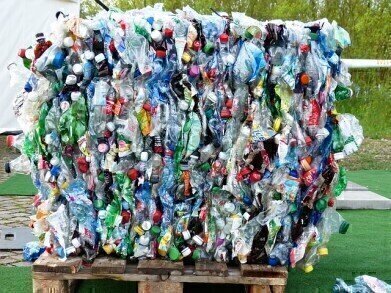Bioanalytical
What's That Smell? — Chromatography Helps Neutralise Recycled Plastics
Aug 28 2017
Most people will be familiar with all the different bins we know need to put outside on ‘bin-day’. In the last twenty years or so, households in the UK have separate bins for recycled and non-recycled waste — the exact bin make-up varies between local authorities as recycling policies differ. And the introduction of environmental standards — such as ISO14000 — has seen enlightened manufacturers increase the amount of material sent for recycling. But recycling can be a smelly business — especially for some plastics. A recent press release from the Austrian company Starlinger & Co. GmbH, highlights how the industry is addressing the issue — and chromatography plays a role.
Mountains of plastic
The EU has set a target for UK households to recycle 50 per cent of waste by 2020, with the UK setting a recycling target for plastics of 57% by 2020. In recent years, the amount of plastic collected for recycling is around around 500,000 tonnes. The quantities are growing slowly — but with plenty of room for growth.
Recycle Now — the national recycling campaign for England estimates that each UK household uses 480 plastic bottles per year, but only recycles 270 of them — meaning almost 16 million plastic bottles are not recycled each year in the UK. But even if we did recycle all our bottles — until recently, not all of them could be reused.
What’s that smell?
Some plastic bottles take on the odour of their contents. And this is bad news for bottle recycling plants. Bottles made from some types of polyolefins can acquire the smells of whatever they contained — food, cosmetics, cleaners and washing-up liquids can all impart their odours to some plastics. And during the recycling process, these create smelly recycled plastics that cannot be used for certain applications. Would you want your fabric conditioner to smell of pine disinfectant?
The Austrian company Starlinger has developed a three-stage process to help eliminate odour from plastics. The stages include:
- Material preparation — the plastic is heated and mixed, volatile odours extracted.
- Degassing — the surface area is increased allowing efficient degassing and permanent exclusion of odours.
- Post-treatment — post-granulation, and the final extraction unit removes the most persistent odours.
Chromatography and a nose — perfect harmony
The development of the process was helped by gas chromatography — and the human nose, with GC used to analyse the odours emitted as the process was developed. The use of gas chromatography to analyse volatile samples is discussed in the article, A New Method for Fast Residual Solvents Analysis and Untargeted Unknown Identification. Faster Sample Throughput and Shorter GC Runtimes Using GC-VUV and Static Headspace.
With the process they have developed, Starlinger’s technology means that more plastic can be reused — which is good news for plastic recyclers, consumers and the environment as more recycling means less use of natural resources.
So, thanks to chromatography, a nose and some smart Austrian technology — plastic recycling can nose ahead of the game.
Digital Edition
Chromatography Today - Buyers' Guide 2022
October 2023
In This Edition Modern & Practical Applications - Accelerating ADC Development with Mass Spectrometry - Implementing High-Resolution Ion Mobility into Peptide Mapping Workflows Chromatogr...
View all digital editions
Events
Apr 23 2024 Kintex, South Korea
Apr 23 2024 Seoul, South Korea
Apr 28 2024 Montreal, Quebec, Canada
May 05 2024 Seville, Spain
May 15 2024 Birmingham, UK














